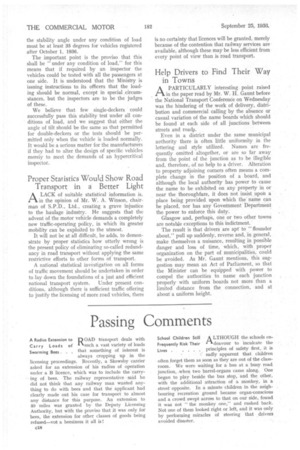The Stability of Public-service Vehicles
Page 63

Page 64

If you've noticed an error in this article please click here to report it so we can fix it.
ONE of the requirements of the Public Service Vehicles (Condition of Fitness) Regulations, 1936, which will came into force on October 1, concerns the stability of single-deck and double. deck passenger vehicles. It provides that, in the case of the latter, it must be possible to tilt to an angle of 28 degrees from the horizontal and to either side the surface ..on. which the vehicle stands, without passing the point at which overturning occnrs. The bus must be loaded with weights placed in the correct relative positions to represent driver and conductor, and a full complement of passengers on the upper deck only.
This requirement must be met by all vehicles of the type registered after July 1, 1931.
In the case of single-deckers, it is required that c17 the stability angle under any condition of load must be at least 35 degrees for vehicles registered after October 1, 1936.
The important point is the proviso that this shall be "under any condition of load," for this means that if required by an inspector the vehicles could be tested with all the passengers at one side. It is understood that the Ministry is issuing instructions to its officers that the loading should be normal, except in special circumstances, but the inspectors are to be the judges of these.
We believe that few single-deckers could successfully pass this stability test under all conditions of load, and we suggest that either the angle of tilt should be the same as that permitted for double-deckers or the tests should be permitted only when the vehicle is loaded normally. It would be a serious matter for the manufacturers if they had to alter the design of specific vehicles merely to meet the demands of an hypercritical inspector.
























































































































































